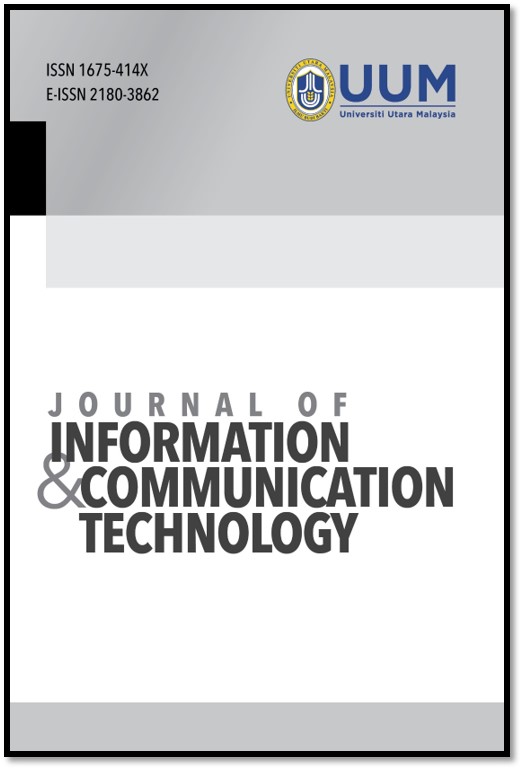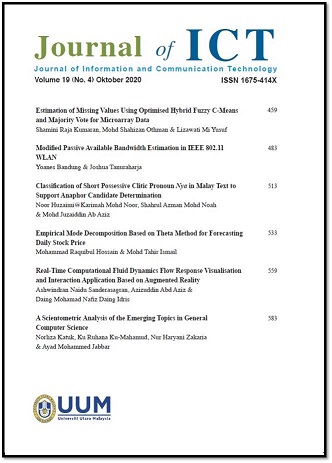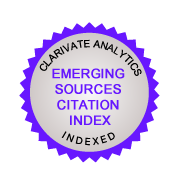An Improved K-Power Means Technique Using Minkowski Distance Metric and Dimension Weights for Clustering Wireless Multipaths in Indoor Channel Scenarios
DOI:
https://doi.org/10.32890/jict2021.20.4.4Keywords:
Channel model, multipath clustering, Minkowski distance, principal component analysis, radio wave propagationAbstract
Wireless multipath clustering is an important area in channel modeling, and an accurate channel model can lead to a reliable wireless environment. Finding the best technique in clustering wireless multipath is still challenging due to the radio channels’ time-variant
characteristics. Several clustering techniques have been developed that offer an improved performance but only consider one or two
parameters of the multipath components. This study improved the K-PowerMeans technique by incorporating weights or loads based on the principal component analysis and utilizing the Minkowski distance metric to replace the Euclidean distance. K-PowerMeans is one of the several methods in clustering wireless propagation multipaths and has been widely studied. This improved clustering technique was applied to the indoor datasets generated from the COST 2100 channel Model and considered the multipath components’ angular domains and their delay. The Jaccard index was used to determine the new method’s accuracy performance. The results showed a significant improvement in the clustering of the developed algorithm than the standard K-PowerMeans.
Metrics
Additional Files
Published
How to Cite
Issue
Section
License
Copyright (c) 2022 Journal of Information and Communication Technology

This work is licensed under a Creative Commons Attribution 4.0 International License.





 2002 - 2020
2002 - 2020


























